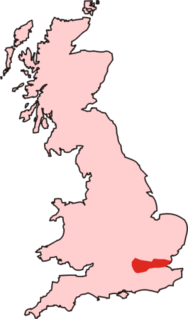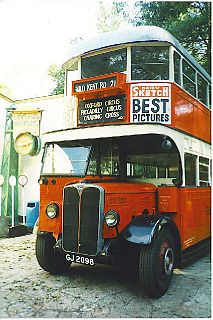The British Electricity Authority (BEA) was established as the central British electricity authority in 1948 under the nationalisation of Great Britain's electricity supply industry enacted by the Electricity Act 1947. The BEA was responsible for the generation, transmission and sale of electricity to area electricity boards, and the development and maintenance of an efficient, coordinated and economical system of electricity supply.
Norweb, originally the North Western Electricity Board, was a British electricity supply and distribution company. It supplied electricity to about 4.7 million industrial, commercial and domestic customers in the North West of England, although Merseyside and parts of Cheshire were instead covered by Manweb.
The Electricity Commissioners were a department of the United Kingdom government's Ministry of Transport, which regulated the electricity supply industry from 1920 until nationalisation in 1948. It was responsible for securing reorganisation on a regional basis and considered schemes for centralisation in a small number of large generating stations owned by joint electricity authorities.
This timeline outlines the key developments in the United Kingdom electricity industry from the start of electricity supplies in the 1870s to the present day. It identifies significant developments in technology for the generation, transmission and use of electricity; outlines developments in the structure of the industry including key organisations and facilities; and records the legislation and regulations that have governed the UK electricity industry.
The North of Scotland Hydro-Electric Board (1943–1990) was founded to design, construct and manage hydroelectricity projects in the Highlands of Scotland. It is regarded as one of the major achievements of Scottish politician Thomas Johnston, who chaired the board from 1945 to 1959.
The South of Scotland Electricity Board (SSEB) generated, transmitted and distributed electricity throughout the south of Scotland, including the former regions of Strathclyde, Lothian, Fife, Central, Borders and Dumfries and Galloway and a few towns in northern England. It operated from 1955 to 1991.
The utility infrastructure of London, England comprises a range of services and facilities that support and enable the functioning of London as a world city. Infrastructure includes facilities associated with products and materials that are consumed such as electricity, gas, water, heating and liquid fuels; materials that are produced such as sewage and solid waste; and facilities that enable communication and connectivity – telecommunications.
North Eastern Electricity Board was an electricity distribution utility in England, serving the North East of England.
The East Midlands Electricity Board (EMEB) was formed in 1947 as one of the United Kingdom's twelve area electricity boards specified under the Electricity Act 1947. In 1990 it was floated on the stock market as East Midlands Electricity plc, which went through several changes of ownership.
Southern Electric plc was a public limited energy company in the United Kingdom between 1990 and 1998, when it merged with Scottish Hydro-Electric plc to form Scottish and Southern Energy plc. The company had its origins in the southern England region of the British nationalised electricity industry. Created in 1948 as the Southern Electricity Board, in 1990 it was privatised by being floated on the London Stock Exchange.

Yorkshire Electricity was an electricity distribution utility in England, serving much of Yorkshire and parts of Derbyshire, Lincolnshire and Nottinghamshire.

Eastern Electricity plc was an electricity supply and distribution utility serving eastern England, including East Anglia and part of Greater London. It was renamed Eastern Group under which name it was listed on the London Stock Exchange and was a constituent of the FTSE 100 Index until it was acquired by Hanson plc in 1995, before being purchased by Texas Utilities in 1998.

The North Thames Gas Board was an autonomous state-owned utility area gas board providing gas for light and heat to industries, commercial premises and homes in south-east England. The board's area of supply, encompassing 1,059 square miles (2,740 km2), included parts of the County of London, Berkshire, Buckinghamshire, Essex, Hertfordshire, Middlesex and Surrey.
SEEBOARD, formerly South Eastern Electricity Board (SEEB), was a British electricity company. The electrical power industry in the United Kingdom was nationalised by the Electricity Act 1947, when over 600 electric power companies were merged into twelve Area Boards, one of which was the South Eastern Electricity Board. It acquired the former Princes Hotel on the seafront in Hove, East Sussex, and converted it into its headquarters. The building was refurbished and substantially extended between 1979 and 1981.
SP Manweb, previously MANWEB, is the regional electricity Distribution Network Operator (DNO) for Merseyside, North Wales and parts of Cheshire. It is now part of SP Energy Networks, itself a subsidiary of the Spanish energy company Iberdrola.

SSE plc is a multinational energy company headquartered in Perth, Scotland. It is listed on the London Stock Exchange, and is a constituent of the FTSE 100 Index. SSE operates in the United Kingdom and Ireland.

The Tilling Group was one of two conglomerates that controlled almost all of the major bus operators in the United Kingdom between World Wars I and II and until nationalisation in 1948.
The City of London Electric Lighting Company Limited (CLELCo) was a British electricity undertaking. It was formed in July 1891 to generate and supply electricity to the City of London and part of north Southwark. It owned and operated Bankside power station on the south bank of the river Thames. The company provided and stimulated demand for electricity, increased its generating capacity, and competed and co-operated with other electricity undertakings in London. The company was dissolved on 1 April 1948 when the British electricity industry was nationalised.
London Associated Electricity Undertakings Limited was an electricity supply company that operated in central and west London from 1935 to 1948. It was founded to acquire, combine and coordinate the electricity distribution interests of six west London electricity companies.
Southport power station supplied electricity to the town of Southport and the surrounding area from 1894 to the late 1960s. The power station was built by the Southport Corporation which operated it up to the nationalisation of the British electricity supply industry in 1948. Birkdale power station was operated by the Birkdale District Electric Supply Company Limited and originally supplied Birkdale Urban District until the district was incorporated into the Borough of Southport in 1911.






